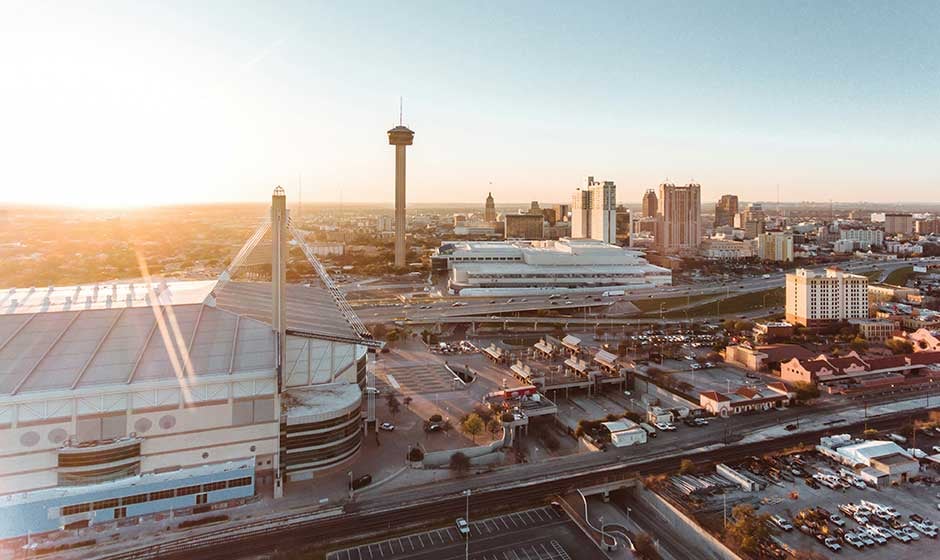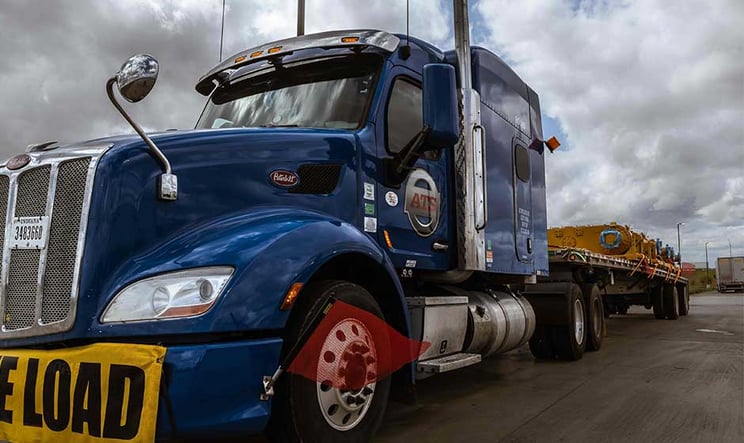
Remember the Alamo? The rallying call for Texan freedom looms large in the history of the state and the wider nation.
Today, the Alamo is a popular tourist attraction. San Antonio, the city that has sprung up around it, may not be Texas’ most flashy city, but it’s a major city with significant industry and attraction.
San Antonio is also part of the Anderson Trucking Service (ATS) Van Network Lanes, a web of 18 cities where we concentrate a portion of our dry van fleet. Over the years, we’ve learned a lot about the city and its role in the U.S. shipping and transportation market.
In this article, you’ll learn:
- Key industries in San Antonio and their influence on shipping
- Common trucking routes into and out of San Antonio
- Factors that drive the cost of shipping in San Antonio
- Seasonality in San Antonio
With this information, you’ll be an expert on shipping to and from San Antonio so you can use this savvy to facilitate smooth shipments from start to finish.
Key Industries That Influence Shipping in San Antonio
San Antonio has a large and varied economy, based around industries like national defense health care, government, tourism and, of course, oil and gas. The city also boasts a growing technology sector.
When it comes to manufacturing, the automotive industry is one of San Antonio’s most prevalent forces.
San Antonio also houses the Southwest Research Institute, where vehicles are tested and researched in a facility that employs over 2,800 workers. The transportation industry “drives” San Antonio in multiple ways.
That’s not the only thing happening in San Antonio. Fortune 500 companies located in the area include Valero Energy, USAA, iHeart Media and NuStar Energy. Other major corporations that call San Antonio home include H-E-B, Pabst Brewing Company, Taco Cabana, VisionWorks of America and Whataburger.
All of these companies need raw materials and produce finished commodities. This keeps hundreds of trucks running into and out of San Antonio daily.
Trucking Routes Around San Antonio, Texas
Street names in San Antonio often complicate things. The city is famous for having multiple streets and avenues with near identical names. Take Military Drive, Military Drive West and Military Highway (which locals sometimes call Northwest Military Drive) for example. Before planning a shipment into/out of the city, be sure to double-check your pick-up and delivery addresses.
The city of San Antonio is built in a hub and spoke design. Its inner Central Loop is formed by I-10, I-35 and I-37. Also circling the city are I-410 and Loop 1604.
Major highways in the area include:
- Stretching from El Paso to Houston, I-10 through San Antonio is known as the Robert F. McDermott Freeway (formerly the Northwest Expressway) and Jose Lopez Freeway (see what we mean about San Antonio having confusing road names?). This is a major hurricane evacuation route, making it critical to the city and the entire state.
- The only radial freeway that does not change its name, I-35, is double-decked in some parts of town and runs to Austin, Waco and Dallas-Fort Worth.
- I-37 runs from Corpus Christie and terminates at I-35 in San Antonio. Known as the Lucian Adams Freeway to the southwest and William J. Bordelon Freeway near downtown, this is a hurricane evacuation route from the southwest.
Accessibility is one of the benefits of shipping freight to and from San Antonio. Proximity to other major transportation cities is another.
Other Major Trucking Hubs Near San Antonio
As the southwest corner of the Texas Triangle, San Antonio is a through-city for freight going to and from Mexico, But it’s also a major shipping city in its own right.
Some major shipping lanes include:
- San Antonio is just under 300 miles from Dallas. Traffic is a major factor along this route, which passes through Austin and Waco. If possible, plan your pick-up and delivery times to help the driver avoid busy commuter hours.
- Depending on the route, Houston and the Port of Houston are both around 200 miles from San Antonio. This lane supplies a lot of goods (like retail products, raw materials and machinery) between the cities.
- The border city of Laredo is just over 150 miles away. As one of the busiest cities for cross-border shipping, Laredo is a hub for many trucking companies and customs officials. ATS also has a major facility in Laredo, Texas.
Everything’s bigger in Texas, and that applies to shipping routes as well. With four cities linked in the ATS Van Network Lanes, Texas has plenty of trucks and drivers available to move any goods to where they are needed.
How Much Does It Cost to Ship Freight To and From San Antonio?
The size and bustling economy of San Antonio make it an attractive city for drivers looking for their next load. However, its far southwest location means it’s often the end of the route, making it slightly more expensive than comparable cities.
For example, a shipment going from San Antonio to Houston will cost a few hundred dollars less than the same shipment going from Houston to San Antonio.
Shipments coming from Laredo will cost less than shipments headed to Laredo.
As usual in the trucking industry, planning ahead and being flexible will help you get the best price on shipments to and from San Antonio. If the carrier can use your load to help the driver meet another goal like getting home, you will receive a favorable price.

What Are the Busiest Freight Shipping Seasons in San Antonio?
In the trucking industry, the busiest time of year is roughly July-October, as retail shopping, harvest and construction seasons ramp up. The slowest season is January-March when winter weather hits the North, construction halts and consumers recover from the hustle and bustle of the holidays.
- Summers in San Antonio are hot. If a truck’s A/C unit gets overworked and stops running, expect the driver to completely stop until it can be fixed.
The busy summer season is also reflected in higher shipping prices in and out of San Antonio, as trucks are filled with summer produce and construction materials across the country pull trucks further north.
While weather is fairly steady in San Antonio, there tends to be some flooding during the summer. When this happens, there is no option other than to wait it out. - Winters are mild in San Antonio, with most interruptions caused by trucks coming from the North. Shipping around this area tends to be less expensive in the winter, as trucks prefer to be in warmer areas where it’s safe to drive, the weather is nice and there are fewer delays.
In any season, San Antonio has tons of trucks moving in and out of its city limits. Choosing a provider when needed is instrumental to your shipping success.
ATS Capacity in San Antonio
Like most metro areas, San Antonio has a ready supply of trucks and drivers year-round. Experienced shippers know that the best carriers are those who spend time in the city and get to know the area.
Like all cities in the Van Network Lanes, San Antonio is a priority for ATS. We have drivers who domicile in the area and are consistently building relationships with shippers and consignees. Learn more about ATS’ shipping services (all of which are offered in San Antonio) here.




